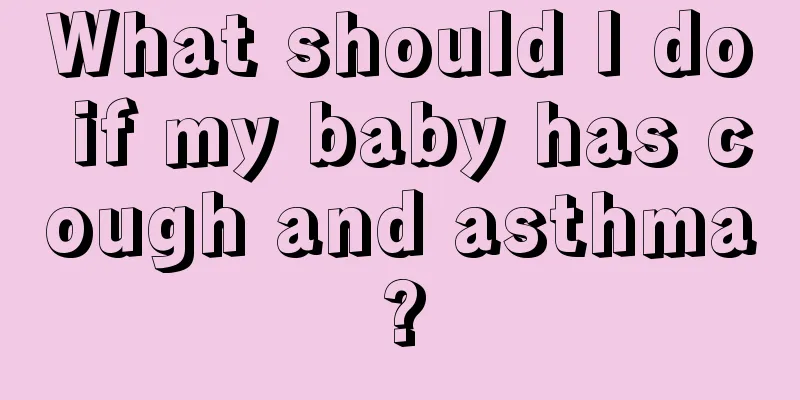How to give baby eye drops

|
Because the baby's retina is not fully developed, and children often rub their eyes with dirty hands, it will cause eye inflammation and infection over time. In order to restore the child's eyes as soon as possible, parents will choose to use eye drops for their children. However, when applying eye drops to the baby, parents must clean their hands and clean the secretions around the eyes. This is very important. 1. Parents should wash their hands before and after applying eye drops. 2. Before using the medicine, you should check the drug name, production date, shelf life, and whether there is discoloration, turbidity and precipitation. Compound preparations or suspensions should be shaken thoroughly before use. 3. If there is secretion in the child's eyes, it should be wiped clean with a sterilized cotton swab before applying eye drops. 4. When applying eye drops, let the child lie on his back or sit with his head slightly tilted back and his eyes looking up. The parent should use the left thumb or cotton swab to gently pull open the child's lower eyelid (lower eyelid), hold the eye dropper in the right hand, and drop a drop of eye drops into the space between the lower eyelid and the eyeball, trying not to drop it directly on the eye. After applying the drops, wipe away any eye fluid that has flowed out of the eye. 5. When applying eye drops, hold the bottle with your right hand at the back 2/3 of the bottom of the bottle, with the long axis of the bottle as perpendicular to the ground as possible and 3 to 5 cm away from the eyes to prevent the mouth of the bottle from touching the eyelashes or other parts and contaminating the eye drops. 6. It is best to close your eyes and rest for a few minutes after applying the eye drops to prevent the drug from being absorbed through the tear duct after blinking. 7. When applying two or more (including two) eye drops, apply the liquid first and then the eye ointment; if both are liquids, there is generally no order of priority. There should be at least 3 to 5 minutes between each application of different eye drops to prevent the drug washout effect, which will wash out the previous eye drops. If it is an eye infection and both eyes need to be used, use the healthy eye first and then the affected eye. 8. Apply eye ointment in the same way as eye drops. Squeeze about 1.0 cm of eye ointment into the space between the lower eyelid and the eyeball. For example, multiple eye ointments can be squeezed into the conjunctival sac at the same time. 9. For children who are too young and unwilling to cooperate, two people are needed together. One person wraps the child's limbs and body with soft cloth and holds the head with both hands, while the other person drops eye drops. 10. Some eye drops have certain requirements for storage conditions, such as avoiding light and keeping at low temperature (2-25°C). 11. Generally, unless otherwise specified, eye drops can be used for 4 weeks after opening the bottle within the shelf life. However, some eye drops can only be used for one week, two weeks, or even once after opening the bottle. 12. Some eye drops may cause blurred vision, difficulty in dark adaptation, and drowsiness after use, so the time of medication should be arranged reasonably. For example, after applying atropine ointment to the eyes, the child will experience a brief burning and stinging sensation in the eyes, photophobia, blurred vision at close range, and inability to read or do homework. After systemic absorption, dry mouth, dry skin and mucous membranes, fever, facial flushing, increased heart rate, etc. may occur. You can drink cold boiled water appropriately and observe. If allergic symptoms such as itching, redness and swelling, conjunctival congestion, etc. occur, the drug should be stopped immediately. |
<<: What are the symptoms of excessive liver fire in children?
>>: How many days does it take for a child with pharyngitis and fever to recover?
Recommend
What are the effects of ADHD on children?
In our daily life, we often see children who are ...
What should I do if my baby has tonsillitis?
It is impossible for children to grow up smoothly...
What should I do if my child gets prickly heat?
It should be very easy to find some heat rash on ...
Treatment for baby's white tongue coating
The incidence of baby's white tongue coating ...
What are the methods to stop baby's cough?
When a baby has a cough, timely treatment is need...
What should I do if my child has a fever after vaccination?
Because there are so many uncertain diseases that...
Causes of dry cough in babies
I believe that families with children have found ...
Are fevers in babies serious?
People who have babies at home know that some bab...
What is the reason for children’s slow intellectual development?
Children's intellectual developmental delay c...
Seven truths about baby fever
1. Fever starts at 38 degrees Celsius When the ba...
Three main symptoms of ADHD in children
ADHD in children often manifests itself in sympto...
Baby sleeping
If a baby who is less than one month old makes gr...
How to sterilize baby bottles and nipples
As your baby grows older, he or she starts drinki...
Why is my child always panting?
Many children will suffer from wheezing when the ...
Is it effective to enhance immunity when the baby has a fever?
It is common for babies to have a fever. Fever ca...









